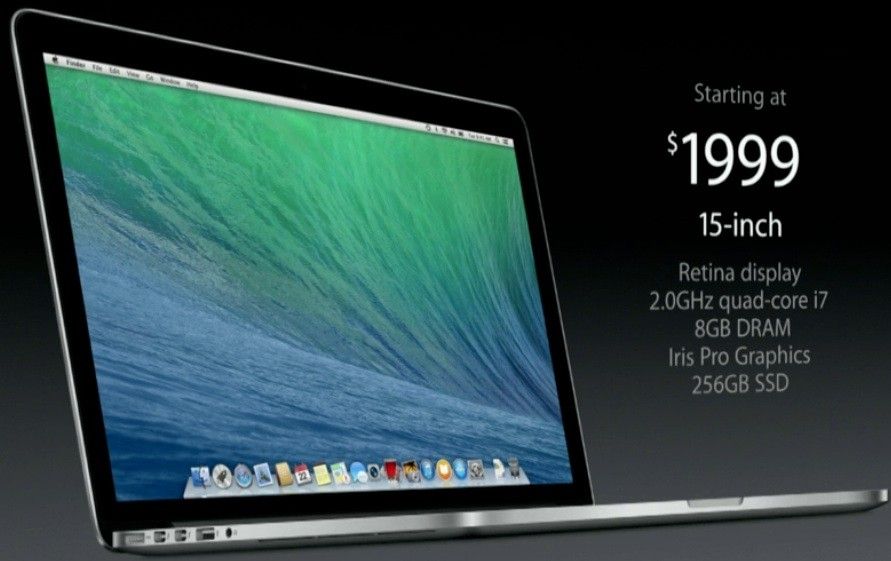Two In A Bush Mac OS
Wouldn’t it be nice if you could have all three major operating systems (OS X, Windows, Ubuntu Linux) running on your computer! This is totally possible with a Mac. Here is how to do it.
Introduced its graphical operating system Mac OS X in March 2001. Thereafter the developers have updated Mac OS X frequently to make it better for the users. The Apple developers keep working on Mac OS to make it smoother, faster and easier. With Mac OS X, you can’t use the old apps or features to print a large image on multiple pages. Discover the innovative world of Apple and shop everything iPhone, iPad, Apple Watch, Mac, and Apple TV, plus explore accessories, entertainment, and expert device support.
- While Apple's previous iPod media players used a minimal operating system, the iPhone used an operating system based on Mac OS X, which would later be called 'iPhone OS' and then iOS. The simultaneous release of two operating systems based on the same frameworks placed tension on Apple, which cited the iPhone as forcing it to delay Mac OS X 10.
- There are two basic ways to run Windows on a Mac computer: using software called Bootcamp or software called Parallels. Parallels is an emulation software that allows you to run Windows inside a Mac OS, while Bootcamp sets up a partition and boots directly into either Mac OS or Windows.
You might be asking yourself why would someone want to be able to run three operating systems on one device. There are some programs, apps and games that are system specific. Some older PC games can only run on Windows. Some programs are only OS X compatible and vice versa. Some individuals might need run company-specific software that requires Windows or a Linux operating system but might prefer Mac’s OS X operating system for personal use and don’t want to use multiple computers or be stuck using an operating system they are not familiar with. For these individuals installing multiple operating systems on a Mac is a convenient feature.
Warning: the following steps are for intermediate to advanced computer users. Incorrectly performing the following steps may result in damage to your computer.
(with OS X 10.10 Yosemite, Windows 10 and Ubuntu 14.04 LTS)
1. In OS X, remove the Core Storage designation from your OS X partition.
- Turn off FileVault encryption in the System Preferences under Security if you have it enabled. Note: it can take up to 3-4 hours to unencrypted the drive.
- Restart in recovery mode by pressing and holding Command + R during the reboot process.
- Once in recovery mode, run Disk Utility. Turn off any disk encryption if enabled, which is at the file setting on the top bar. You might notice that your hard disk name changes.
- Restart computer again in OS X. Run Disk Utility. Now the “dragging” corner to partition your hard drive is available. Click on it and resize the Mac HD to however many GB (gigabytes) you may need to run your multiple OS’s ( Windows OS and Ubuntu).
- Restart into Windows OS. Download the free software Minitool partition. This software allows you to merge unused space on your Mac HD with your Windows partition.
2. Launch OS X Bootcamp. Create a Windows installation USB drive (I've created both Windows 8 and 10) and create a hard drive partition for Windows.
3. When the Mac reboots into the Bootcamp Windows installer, hold down the power button to shut down, then press and hold Option+Power to restart into the Mac bootloader. Select and boot the OS X partition.
4. In OS X, run Disk Utility. Reduce the size of the OS X partition, then create a new partition for Ubuntu in the empty space. File format on the Ubuntu partition shouldn't matter at this point. I used FAT.
5. Create an Ubuntu installation disk whatever way you prefer with (I believe) whatever version you prefer.
Two In A Bush Mac Os 11
6. Shutdown again and hold Option+Power restart to get to the Mac bootloader, then select the Ubuntu install disk (should be labeled EFI, there might be two of them, either should work). Reformat the partition you created in Step 4 for Ubuntu and complete the installation process, then shutdown. (If you reboot into the Mac bootloader at this point, Ubuntu should not be visible).
7. Power (not Option+Power) restart. Your Macbook should boot into the Bootcamp installation partition. Complete the Windows installation process normally. The Macbook will reboot several times. If ever it reboots into the wrong partition (it shouldn't), then manually shutdown, Option+Power boot, and select the Bootcamp partition manually.
8. Almost done. After Windows is fully installed and you can use it normally, Option+Power reboot into OS X, then install rEFInd.
Shutdown and perform a regular boot. You will arrive at the rEFInd menu with a 20-second timer, and all three OS’s should be visible. rEFInd is a handy piece of software that allows you to easily select the OS you want to boot into whenever you restart your Mac.
Note 1:
Two In A Bush Mac Os X
I have had the problem, twice now, that whenever I install OS X updates, rEFInd disappears. When I power on the computer, it boots straight to OS X. This problem is fixed by simply reinstalling rEFInd from within OS X. Back to normal.
Note 2:

Some users might receive errors when returning to the Windows installation process. Julian Leland recommends clearing the hybrid MBR data from within OS X via this process.